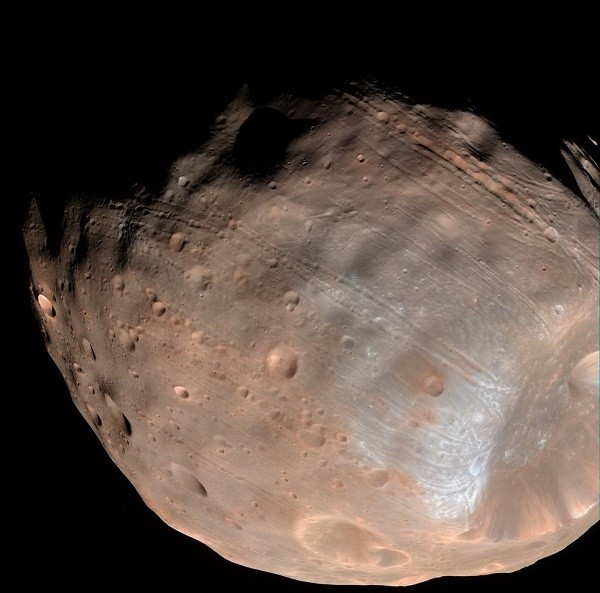Mars is predicted to gain a ring system like Saturn after it destroys its moon Phobos, more than 20 million years from now.
According to Cnet, Mars is gradually pulling Phobos, the larger of Mars' two moons and the one closer to it, inward. Some time between 20 t0 40 million years from now, it will collide with the red planet and the rocky debris will make up Mars' very own ring.
What makes the crash and formation of the ring more inevitable is the fact that Phobos is highly fractured and composed of weak materials and rubbles.
Lead author Benjamin Black of US Berkeley compares the resulting debris to a granola bar. Most of it, including dust, will orbit Mars. The larger pieces will hit the planet's surface, forming new craters.
Black, with fellow researcher Tushar Mittal arrived at the conclusion by creating simulations of Phobos' Stickney crater, which spans a sixth of the moon's diameter. It was formed when a space rock crashed on it without breaking it apart. The simulations determined that Phobos' strength is lesser than the tidal stress resulting from Mars' pull.
Mars' ring system will have a mass density similar to Saturn's. They are expected to orbit Mars from one to one hundred million years, but rocks will start raining on the planet after several million years, according to Forbes.
Scientists believe that Saturn's rings had once been its moons. Neptune also pulls its moon Triton toward it, so it has the same fate as Phobos. In contrast, moons of other planets in the solar system, like Earth's move away from them.
Although the event is still 20 million years away, Mars' rings might not be visible from Earth, but they may possibly brighten Mars.



























